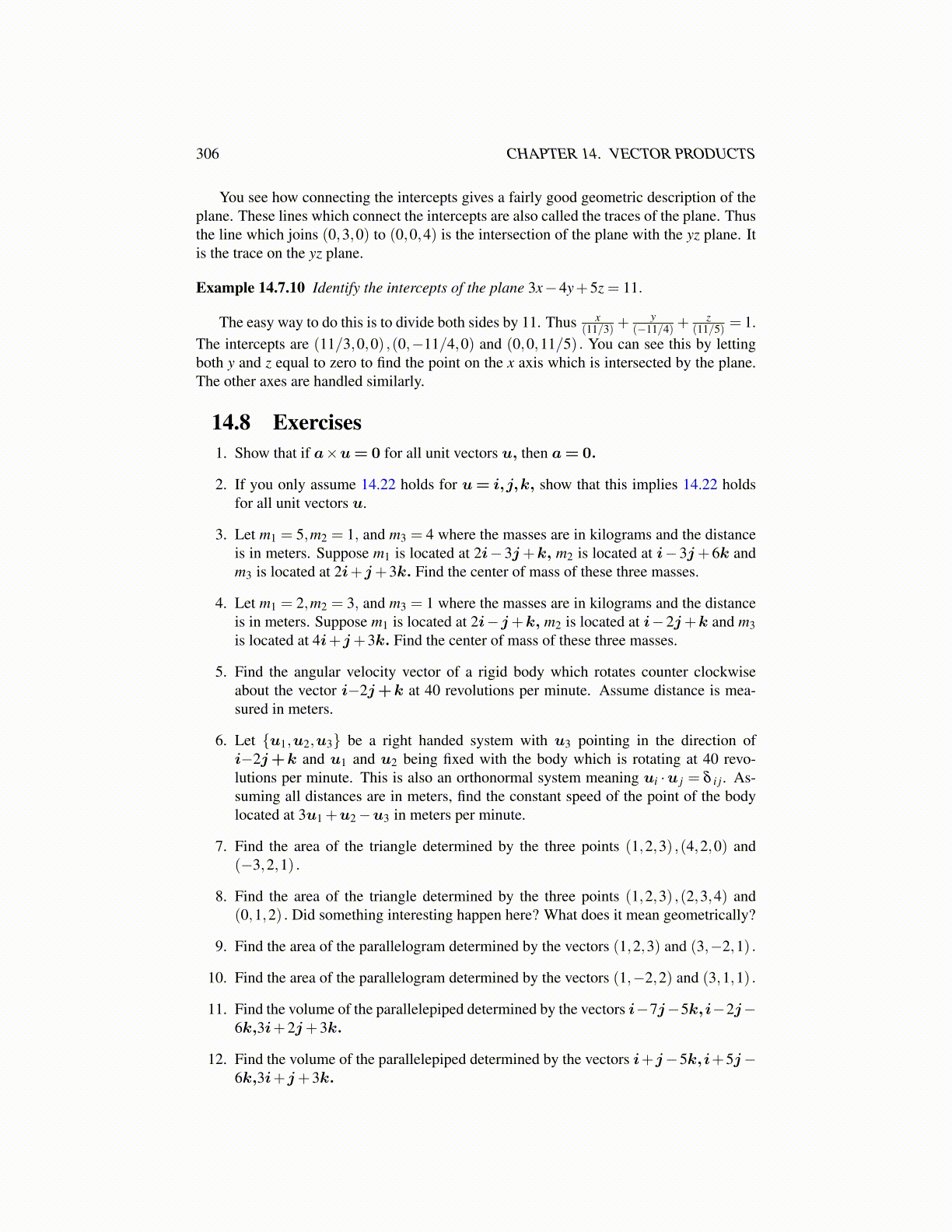
306 CHAPTER 14. VECTOR PRODUCTS
Example 14.7.9 Sketch the plane having intercepts (2,0,0) ,(0,3,0), and (0,0,4) .
x
y
z
You see how connecting the intercepts gives a fairly good geometric description of theplane. These lines which connect the intercepts are also called the traces of the plane. Thusthe line which joins (0,3,0) to (0,0,4) is the intersection of the plane with the yz plane. Itis the trace on the yz plane.
Example 14.7.10 Identify the intercepts of the plane 3x−4y+5z = 11.
The easy way to do this is to divide both sides by 11. Thus x(11/3) +
y(−11/4) +
z(11/5) = 1.
The intercepts are (11/3,0,0) ,(0,−11/4,0) and (0,0,11/5) . You can see this by lettingboth y and z equal to zero to find the point on the x axis which is intersected by the plane.The other axes are handled similarly.
14.8 Exercises1. Show that if a×u= 0 for all unit vectors u, then a= 0.
2. If you only assume 14.22 holds for u= i,j,k, show that this implies 14.22 holdsfor all unit vectors u.
3. Let m1 = 5,m2 = 1, and m3 = 4 where the masses are in kilograms and the distanceis in meters. Suppose m1 is located at 2i−3j+k, m2 is located at i−3j+6k andm3 is located at 2i+j+3k. Find the center of mass of these three masses.
4. Let m1 = 2,m2 = 3, and m3 = 1 where the masses are in kilograms and the distanceis in meters. Suppose m1 is located at 2i−j+k, m2 is located at i−2j+k and m3is located at 4i+j+3k. Find the center of mass of these three masses.
5. Find the angular velocity vector of a rigid body which rotates counter clockwiseabout the vector i−2j+k at 40 revolutions per minute. Assume distance is mea-sured in meters.
6. Let {u1,u2,u3} be a right handed system with u3 pointing in the direction ofi−2j+k and u1 and u2 being fixed with the body which is rotating at 40 revo-lutions per minute. This is also an orthonormal system meaning ui ·u j = δ i j. As-suming all distances are in meters, find the constant speed of the point of the bodylocated at 3u1 +u2 −u3 in meters per minute.
7. Find the area of the triangle determined by the three points (1,2,3) ,(4,2,0) and(−3,2,1) .